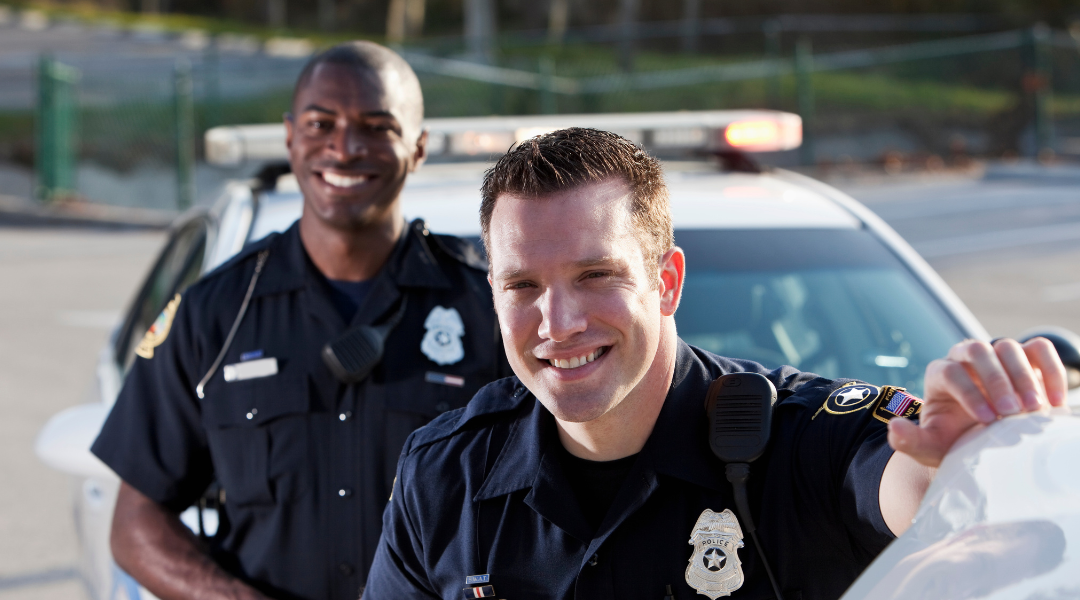Bullying is an age-old issue. Generations old and new are familiar with the power plays of those that intentionally try to hurt another. It happens on the playground, in the classroom, by the locker, at the lunch table, on the bus, through social media networks and everywhere in between, and it can take a toll on a child or teen.
It’s important to understand the true definition of bullying. It is a conscious, intentional, hostile action towards another that is meant to hurt or create fear or terror, according to Lisa Elliott, Ph.D., psychologist and manager of the Behavioral Health Clinic at Cook Children’s in Denton. An act of bullying includes three elements—an imbalance of power, the intent to harm emotionally or physically and pleasure in witnessing the pain.
If you let them, bullies can plant seeds of rejection into your soul, some that can deceive you for a lifetime and create deep-rooted strongholds of confusion, fear, anger, bitterness, insecurity and thoughts of inadequacy, according to Cook Children’s mental health experts.
Research shows that adults who were bullied as a child have an increased risk of depression and anxiety; may suffer long-term negative consequences with jobs, income and relationships; and may experience poorer health. What’s worse, both those who bully and those who are bullied are more likely to exhibit suicide-related behavior.
“Being bullied can be a trauma for some kids because it overwhelms their ability to cope,” said Denise Coover, LCSW, a trauma informed care specialist at Cook Children’s Medical Center.
You Matter
As bullies target the insecurities of others, it can produce shame and guilt in the one being bullied. In the victim’s eyes, their perceived shortcoming or failure is validated by the bully. That’s when a wall goes up in many kids, and they retreat from those who can help them sift through the truth versus the lies.
“What someone says about you does not make it true,” Coover said. “And every negative thought that you have about yourself isn’t always true either. But when a bully hits on a particular insecurity, it’s hard for kids to put that into words so that someone can help them process it.”
On the flip side, those emotions are exactly what fuel bullies and their assaults. The pain bullies inflict on others is a direct result of emotions brewing within themselves, according to Coover. It’s a coping strategy, one that gives them a sense of control of their own perceived failures by elevating themselves over others.
“Kids will use behavior to say there is something wrong here,” Coover said. “And it’s up to a clinician, in-tune parents or a school system to figure out what the problem is because the behavior is telling us there’s something going on.”
It’s not that bullies bully because they are nothing but bullies. They bully because they don’t know who they are. Bullying gives them a sense of identity where they otherwise have no point of reference for purpose, belonging or intrinsic worth of themselves or others. Having a solid grasp on those things is like a coat of armor for kids against both becoming a bully and being negatively impacted by one. Establishing those values starts at home.
“We, as parents, can't be so unaware that we think that our child may not be the bully,” Dr. Elliott said. “It is absolutely critical that we not only talk about this with our children in order to protect them, but we also have to teach them how to be a good citizen.”
Dr. Elliott cautions that parents should not dismiss complaints about their child being a bully or bury their head in shame either. Address the issue. It’s a good opportunity to find out what may be behind the bully behavior, which you can then help your child overcome. Seize the moment to teach them about how to treat others with kindness and compassion. It could be an invaluable growth opportunity for your child and your relationship.
“What kids hear from you is what they will know about themselves,” Coover said about a parent’s role in building strong and resilient children.
Helping kids understand their intrinsic value as a created being can be like a shield from the flaming arrows of a bully. One way parents can plant and water the seeds of purpose and worth is by helping children identify what matters most about them and what is and isn’t true about themselves. They can also help frame their kid’s perspective by encouraging them in the journey of their endeavors, not just reveling in the outcome.
“When a kid brings home straight A’s, it’s a great thing to celebrate,” Coover explained. “But what’s more important for a parent to see and acknowledge is how hard the child worked, their dedication, how much they learned and the steps they took to achieve that. Kids need to hear that from parents, no matter the grade that resulted from their best effort and hard work.”
This helps reinforce competence, confidence and connection — as described in "Building Resilience in Children and Teens" by Kenneth R. Ginsburg, MD, MS Ed, FAAP. Resilience is the ability to bounce back from stress, trauma or hardship. It isn’t something we’re born with, but something learned. Oftentimes, through trial by fire, but also by watching others we love and respect bounce back from a difficult circumstance. Teaching kids to be resilient gives them a hopeful perspective.
The Rise of Cyberbullying
Bullies may use physical force, relentless verbal lashings or social exclusion to intimidate and control. But the rise of the internet and social media has added a new virtual venue where bullies seek to crush the spirit of their target. According to a 2018 Pew Research Study, 59% of teens have experienced some type of cyberbullying.
The pandemic made cyberbullying even easier as kids were forced out of classrooms and onto virtual platforms for learning and socializing. More time online translated to a 70% increase in hateful speech between kids and teens during online chats, according to a study conducted by L1GHT.
“This is a whole new world for parents and kids to navigate,” Dr. Elliott said. “Parents need to have controls. They need to have access to see what their kids are doing. It’s really important for parents to monitor what their kids are viewing, saying and sharing online.”
Cyberbullying can be extreme and pervasive, Dr. Elliott said. The internet is always open for business and provides harassers a direct line into the personal device of a victim. It’s fast, easy, far reaching, can be done anonymously and lives in infamy forever.
Cook Children’s experts shared these tips for protecting your child online:
- Continually educate yourself on the ins and outs of social media outlets. Do you know about TikTok, Instagram, YouTube and Snapchat, just to name a few? If not, you should. This is where your kids are hanging out. Educate yourself on how they work and how your kids are using them.
- Openly discuss bullying and cyberbullying with your kids on a consistent basis. These are conversations that need to be had more than once as your child matures. Ask your child if they have been bullied, how they handled the incident and how it made them feel. Talk to them about what they do when they see others being bullied. Are they being a good bystander? Teach them about empathy, and help them think through how to help others.
- To encourage kids to open up, have them write it, draw it or say it. If talking doesn’t come easy, kids who enjoy writing can journal their thoughts. Those with an artistic flair may prefer to illustrate them. Kids may be more receptive to talking if you strike up a conversation when engaging in an activity together, riding in the car or just having a casual discussion. Learn what communication tool works best for your child and embrace it.
When And How To Intervene
You may sense your child is being bullied if you see a change in their behavior. If they stop doing things they once loved, start spending lots of time alone in their room, are irritable and weepy or their grades plummet, you should take note that something may be wrong.
Sometimes parents need to intervene to stop a bully. Other times they simply need to problem-solve with—not for—their child. Coaching kids on how to respond appropriately on their own helps build confidence and resilience, and helps their brains develop problem-solving skills that benefit them for life.
“If we always do things for our kids, their brains don’t grow,” Coover said. So they become adults who can’t manage any kind of problem in life, because they’ve never had to do it. Someone has always stepped in to take care of it for them so their brain didn’t create those neural pathways to consider solutions.”
To know your role, Dr. Elliott says to start by determining what kind of bullying your child is experiencing. Are they being physically assaulted, verbally harassed or cyberbullied? How often is your child targeted?
If the bully is getting physical or threatening bodily harm, always report it to the proper authorities, be it school administration or law enforcement. In Texas, schools are required to adopt anti-bullying policies and establish procedures for reporting incidents. They must also notify parents and guardians of a reported incident and outline disciplinary actions for those who bully. To better understand the state’s bullying laws, check out tea.texas.gov and stopbullying.gov.
If the harassment is verbal in nature, it may benefit your child to take a different approach, one that equips them to respond to the bully themselves and helps them build life-long conflict management skills.
Don’t Feed The Rat
Knowing how to handle a bully can be the difference between a child suffering silently through relentless attacks versus a single incident that is stymied before it escalates to something more serious. It’s all about the balance of power, Dr. Elliott says, and ignoring a bully isn’t always the answer.
“Bullies thrive on a perception of power and control over another person’s emotions,” Dr. Elliott said. “Even when you ignore a bully, they still assume you are hurting inside. That perceived weakness keeps them coming back time and time again to satisfy their desire for power and control.”
Dr. Elliott has personally developed and tested a bullying response tool that she employs with her patients. Her method teaches kids to respond to bullies in a way that both quiets the harasser and builds resilience in the one being harassed. It essentially conveys a message to the bully that their opinion isn’t valued and, therefore, not offensive. She calls it The Rat Method. Click on the video below to hear Dr. Elliott explain her method in her own words.
There Is Hope
Your child can overcome either being a bully or being the victim of a bully. Together, you can create defenses against bullies, develop empathy for others and foster resilience to stop bullies and their bad intentions in their tracks. Your child’s short and long-term mental and emotional health will be better for it.
Lisa Elliott, Ph.D., explains 'The Rat Method'
Dr. Elliott developed and tested this bullying response tool that she employs with her patients. Her method teaches kids to respond to bullies in a way that both quiets the harasser and builds resilience in the one being harassed.





































